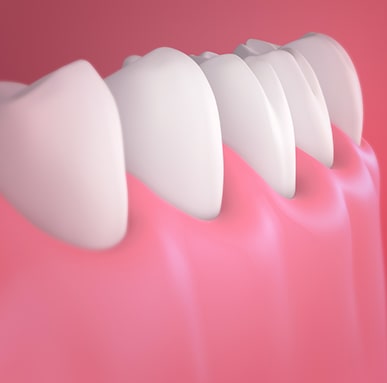What is TMJ?
Many of our patients come to us having suffered from persistent headaches and neck and shoulder pain for months or years and are not sure of the origin of their condition or how to solve it. Some have relied on drug treatments for relief, and many have endured countless tests and doctor visits trying to find the root cause of their problems, to no avail. Often, the underlying cause of these symptoms is called TMJ (temporomandibular disorder).
TMJ refers to a painful condition that affects the temporomandibular joint or TMJ. This condition gravely affects the movement of the neck and the jaw because the nerves and the muscles don’t work in accordance with their natural function. The pain that comes along with TMJ is normally temporary and often occurs in cycles.
Symptoms
It is possible to have TMJ dysfunction for a long time without realizing it since often the symptoms seem unrelated to your jaw joint. Everyone is different. Therefore, the disorder can and does manifest itself in a variety of ways.
The following are symptoms a patient with TMJ disorder might experience:
- Headaches & Migraines.
- Clicking or popping in the jaw.
- Soreness in the jaw or face.
- Pain in the neck, shoulders, or back.
- Ear pain or ringing in the ears.
- Problems chewing.
- Cracked or chipped teeth.
- Stiffness or soreness in the jaw upon waking.
- Limited mouth opening.
- Excessive wear on teeth is caused by the stress of bruxing and grinding.
- Mobile teeth
Causes of TMJ
The TMJ (temporomandibular joint) is an extremely complex system. These joints are located on both sides of the face, right in front of the ears and connect the jawbone to the skull. Temporomandibular disorders usually involve more than one symptom and rarely have a single cause. TMJ is believed to result from several factors acting together. Some causes can include:
- Misaligned Bite
The jaw joint is the only articulation in the human body that ends its movement on hard tissue (the teeth), and when the jaw is misaligned, both the hard and the soft tissues are affected. It is almost like trying to walk with one shoe on and one shoe off. It can be done, but other muscles have to overwork to compensate, and the extra muscle activity can cause the muscles to fatigue and start to hurt. These overworked muscles can cause primary pain or can trigger secondary pain, such as tension and migraine headaches.
- Trauma
Injuries to the jaws, such as a car accident, a fall, a punch, etc., can cause damage to the muscles and/or joints.
- Clenching and Grinding
Habitual clenching and grinding of the teeth places extreme pressure and strain on the joints and is one of the most common causes of TMJ disorders. The added stress on the jaw joint can cause wear and tear of the cartilage disks and may even cause the jaw joint to become dislocated. Besides causing damage directly to the teeth, bruxism can also lead to recurring headaches. Many people clench or grind their teeth in their sleep without even realizing they do it.
- Stress
Emotional stress often plays an integral role in the development of TMJ. Daily stress increases both the severity and duration of bruxism while asleep. Also, many people will subconsciously clench and/or grind their teeth more while awake during times of stress.
Other causes may include
- Habits such as excessive gum chewing or fingernail biting cause jaw muscle overuse.
- Osteoarthritis or rheumatoid arthritis in the TMJ.
- Occupational tasks such as holding the telephone between the head and shoulder
- Excessive jaw movements like over-opening the jaw beyond its normal range.
Treatment
Many of our patients who suffer from recurring headaches, facial pain, and other TMJ symptoms simply cannot believe that a TMJ problem could be the source of their troubles. They are convinced that a neurological problem or sinus condition must be the cause.
If you think you may be suffering from TMJ disorders, don’t hesitate another day to contact Amery House. A careful examination is a critical step before a specific treatment is selected.
The examination may include:
- Examining the joints and muscles.
- Seeing if the joints and muscles are tender.
- Checking you as you open and shut your jaw.
- Checking the head for areas that may be painful.
We will evaluate your bite and jaw joint relationship to let you know if you might be a candidate for dental treatment of TMJ.
If the dentist determines that you in fact do grind your teeth, they may recommend the use of a custom-fitted appliance (Kois Deprogrammer) to be worn on the upper teeth to protect the biting surfaces of your teeth and minimize any excessive forces in the jaw muscles and joints.
Kois Deprogrammer
The Kois Deprogrammer is a removable diagnostic appliance similar to an orthodontic retainer that is worn over the teeth to prevent them from biting together. It is specifically designed to diagnose the cause of problems related to the bite.
How the Deprogrammer works:
The deprogrammer has a small platform between the front teeth that prevents the back teeth from interlocking and reinforcing the position of your existing bite. This allows the muscles and jaw joints to relax and settle into their physiologically ideal resting position.
The appliance not only protects the teeth from the severe forces of contraction of the jaw but also deprograms the muscles so that you are not going to clench and grind. In many cases, symptoms can be relieved or reduced greatly with treatment.
Once your jaw has fully relaxed, your dentist will be able to provide you with treatment options for maintaining your bite in this new, more comfortable position. The major advantage of this treatment modality is that it is not expensive and can often relieve long-standing pain that has been a major hindrance to a normal lifestyle for years!
Equilibration
Equilibration is a process in which we adjust your bite by reshaping the biting surfaces of your teeth. It is important for the health of your mouth to have your teeth come together properly when you bite and chew. Equilibration can prevent you from experiencing the problems associated with TMJ.
What is a healthy bite?
If your bite is healthy, your teeth will come together in such a way that they allow ideal paths of movement. This creates harmony for your jaw joint and maximum protection for your teeth. However, if you have had periodontal disease, an abscess, tooth crowding, or previous tooth loss, your teeth may shift or tilt. When this happens, your bite’s natural harmony may be compromised or lost.
The Procedure
The process of equilibration begins with a careful examination of your mouth and your bite. This sometimes includes taking x-rays. We’ll use a special masking tape to evaluate your specific biting pattern. Then we’ll use the dental handpiece to carefully and meticulously remove small layers of tooth enamel. This process is repeated, sometimes on subsequent visits, until your bite is back in harmony.
Equilibration is a safe and effective procedure that prevents a chain reaction of problems in your mouth and restores harmony to your teeth and bite.
Back to Periodontal Treatments















